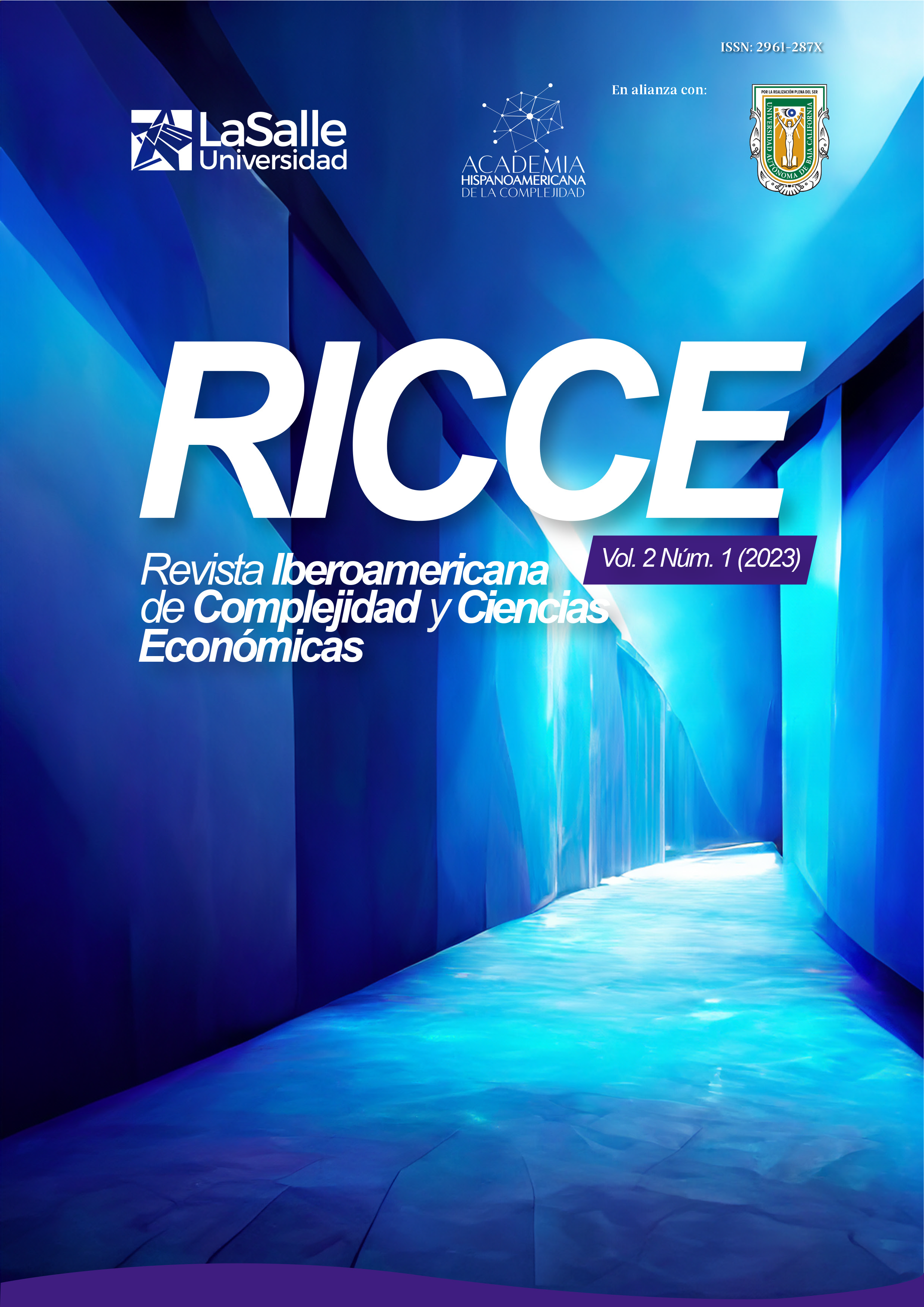El polo a tierra para comprender la complejidad de la vida
Resumen
Este artículo defiende una comprensión de polo a tierra de la complejidad constituida por un triple factor, así: el entrelazamiento entre geología, microbiología y evolución. Es esta triple articulación la que se encuentra en la base de una comprensión de la vida tal y como la conocemos. La tesis de este artículo afirma que el origen de la vida es contemporáneamente el origen de la biosfera como un sistema vivo. El dualismo debe ser superado de manera radical. De esta suerte, no hay, de un lado, la física, digamos, la geología y, de otra parte, la biología. Por el contrario, ambas constituyen un sistema altamente complejo. La aproximación sugerida en este trabajo comporta una visión fenomenológica y por tanto no sustancialista de la comprensión de la vida y de los sistemas vivos. La vida, cabe decir, no es causada, sino, es un fenómeno autopoiético y autoorganizado. Una visión evolutiva de la vida implica en consecuencia una comprensión abierta de la vida. Al final se exploran las consecuencias de una visión semejante.
Descargas
Citas
Bethke JH, Ma HR, Tsoi R, Cheng L, Xiao M, You L., (2023). “Vertical and horizontal gene transfer tradeoffs direct plasmid fitness”, in: Mol Syst Biol., Feb 10;19(2): e11300. doi: 10.15252/msb.202211300. Epub 2022 Dec 27. PMID: 36573357; PMCID: PMC9912019 DOI: https://doi.org/10.15252/msb.202211300
Bobay, L.-M., Traverse, C. C., and Ochman, H., (2015). “Impermanence of bacterial clones”, in: PNAS, July 20, 112 (29) 8893-8900; doi: https://doi.org/10.1073/pnas.1501724112 DOI: https://doi.org/10.1073/pnas.1501724112
Born, M., (2013). The Restless Universe. Dover Publications
Buchanan, M., (2010). “Horizontal and vertical: the evolution of evolution”, in: New Scientist, 20 January; available at: https://www.newscientist.com/article/mg20527441-500-horizontal-and-vertical-the-evolution-of-evolution/
Cavicchioli, R., Ripple, W.J., Timmis, K.N. et al., (2019). “Scientists’ warning to humanity: microorganisms and climate change”, in: Nat Rev Microbiol 17, 569–586. https://doi.org/10.1038/s41579-019-0222-5 DOI: https://doi.org/10.1038/s41579-019-0222-5
Chaisson, E. J., (2001). Cosmic Evolution. The Rise of Complexity in Nature. Harvard University Press DOI: https://doi.org/10.2307/j.ctv1dfv99q
Craw, R. C., Grehan, J. R., Heads, M. J., (1999). Panbiogeography. Tracking the History of Life. Oxford University Press
Cook, R., (1995). Micrographia. The Classics of Science Library
Cuvier, G., (2009). Essay in the Theory of the Earth. Cambridge University Press DOI: https://doi.org/10.1017/CBO9780511694332
Daniel R. Colman, D. R., Lindsay, M. R., Amenabar, M. J., Boyd, E. S., (2019). “The Intersection of Geology, Geochemistry, and Microbiology in Continental Hydrothermal Systems”, in: Astrobiology, 19(12) 1505-1522; doi: 10.1089/ast.2018.2016 DOI: https://doi.org/10.1089/ast.2018.2016
Dartnell, L. (2019). “The hunt for life beyond Earth”, in: Biochemist, 40(6), 4–4; doi: https://doi.org/10.1042/bio04006004 DOI: https://doi.org/10.1042/BIO04006004
Gould, S. J., (2007). Punctuated Equilibrium. The Belknap Press DOI: https://doi.org/10.4159/9780674037847
Darwin, C., (1995). The Origin of Species by Means of Natural Selection. The Classics of Science Library
Gould, S. J., (2002). The Structure of Evolutionary Theory. Belknap Press DOI: https://doi.org/10.4159/9780674417922
Gould, S. J., (1990). Wonderful Life: Burgess Shale and the Nature of History. W. W. Norton & Co.
Gould, S J. and Eldredge, N., (1977). “Punctuated Equilibria: The Tempo and Mode of Evolution Reconsidered”, in: Paleobiology, 3 (2), 115-151; available at: https://www.jstor.org/stable/2400177 DOI: https://doi.org/10.1017/S0094837300005224
Hands, J., (2017). Cosmosapiens. Human Evolution from the Origin of the Universe. Overlook Duckworth
Impey, C., (2011). How It Ends. From You to the Universe. W. W. Norton & Company
Jacob, F., (1986). Le jeu des possibles. LGF
Kébé, F., (2019). La lune est un roman. Histoire, mythes et légendes. Slatkine et Cie.
Kieffer, S. W., (2013). The Dynamics of Disaster. W. W. Norton & Company
Kolter, R., (2021). The History of Microbiology-A Personal Interpretation. Annual Review of Microbiology. Annual Reviews Inc. doi: https://doi.org/10.1146/annurev-micro-033020-020648 DOI: https://doi.org/10.1146/annurev-micro-033020-020648
Kyburg, Jr., H. E., and Teng, C. M., (2001). Uncertain Inference. Cambridge University Press DOI: https://doi.org/10.1017/CBO9780511612947
Leakey, R. E., Lewin, R., (1996). The Sixth Extinction: Patterns of Life and the Future of Mankind. Anchor
Linewaever, C. H., Davies, P. C. W., and Ruse, M., (Eds.), (2013). Complexity and the Arrow of Time. Cambridge University Press DOI: https://doi.org/10.1017/CBO9781139225700
Lin, W., Kirschvink, J. L., Paterson, G. A., Bazylinski, D. A., Pan, Y., (2020). “On the origin of microbial magnetoreception”, in: National Science Review. Oxford University Press; doi: https://doi.org/10.1093/nsr/nwz065 DOI: https://doi.org/10.1093/nsr/nwz065
Lyell, C., (1997). Principles of Geology. Vol. I-III. The Classics of Science Library
Lorenz, E., (1995). The Essence of Chaos. The University of Washington Press DOI: https://doi.org/10.1063/1.2807913
Maldonado, C. E., (2023) “Cinco tesis (y cinco conjeturas) acerca de la complejidad del origen y la naturaleza de la vida”, en: Revista de Investigación en Ciencias de la Complejidad y Economía”, 1 (1), 37-54, doi: https://doi.org/10.48168/RICCE.v1n1p37 DOI: https://doi.org/10.48168/ricce.v1n1p37
Derechos de autor 2023 Revista Iberoamericana de Complejidad y Ciencias Económicas

Esta obra está bajo licencia internacional Creative Commons Reconocimiento-NoComercial-SinObrasDerivadas 4.0.
Los autores ceden exclusivamente el derecho de publicación de su artículo a la Revista Iberoamericana de Complejidad y Ciencias Económicas, que podrá editar o modificar formalmente el texto aprobado para cumplir con las normas editoriales propias y con los estándares gramaticales universales, antes de su publicación; asimismo, nuestra revista podrá traducir los manuscritos aprobados a cuantos idiomas considere necesario y difundirlos en varios países, dándole siempre el reconocimiento público al autor o autores de la investigación.









